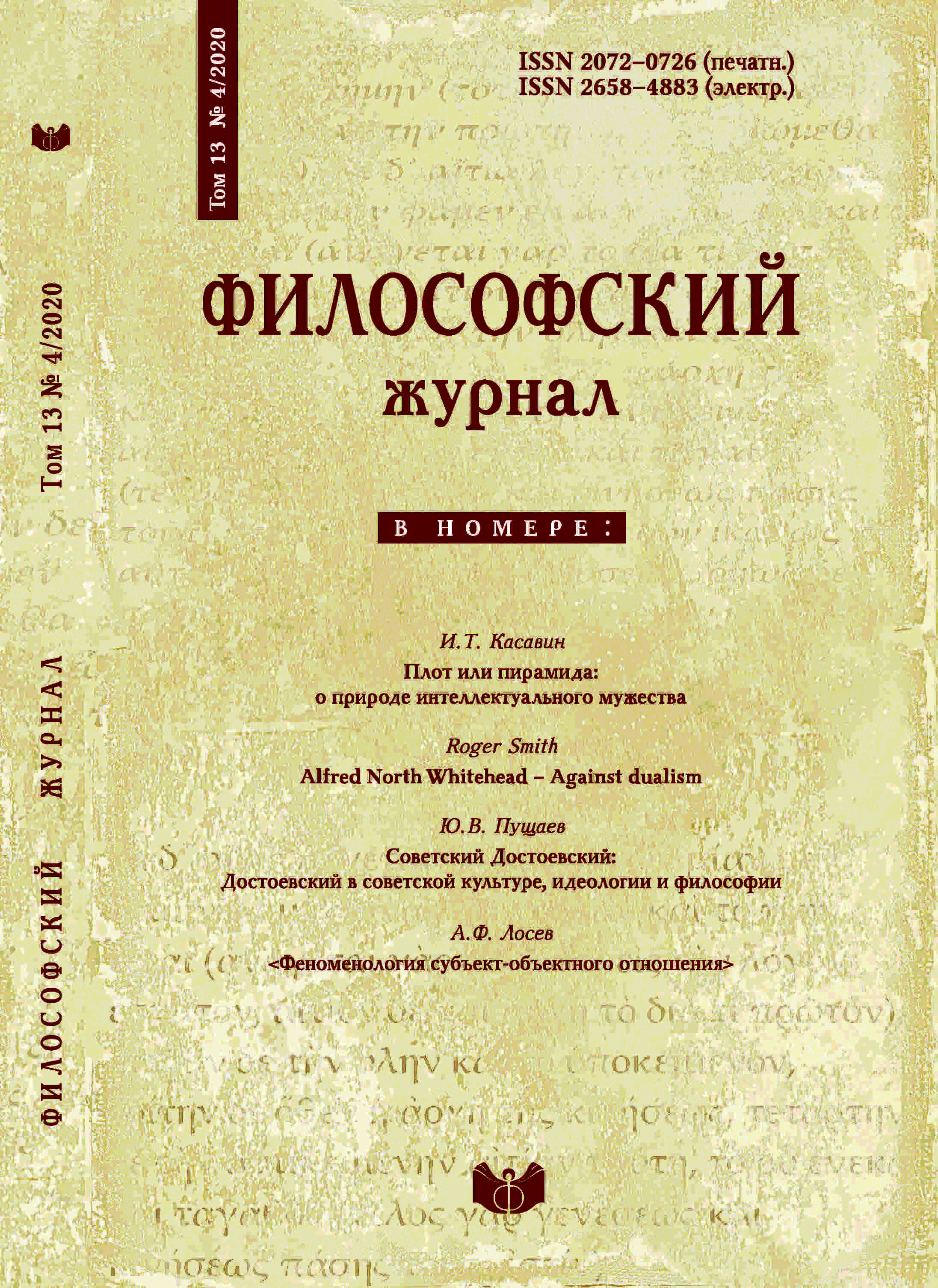The phenomenology of the subject-object relation
(ed. by A. A. Takho-Godi, V. P. Troitskii)
DOI:
https://doi.org/10.21146/2072-0726-2020-13-4-148-170Keywords:
A.F. Losev, Philosophy of the Name, dialectical system, phenomenology, eidos, energy, energema, antinomyAbstract
The publication of newly discovered materials from the archive of A.F. Losev relating to the original composition of the famous philosopher’s book “Philosophy of the Name” (1927) continues. Previously, the “Philosophy Journal” (No. 3, 2019) published “The general characteristic of tetractide dialectics”, a fragment which was intended to open the second, unreleased part of the book. In it, a kind of categorical system unfolds from the “dialectics of the first-entity” to the “dialectics of the name of the entity”. This new piece bearing the provisional title of “The Phenomenology of the subject – object relation” presents the closing sections of the second part of the book. Here, Losev begins with treating the relationship of the primo-entity and the name of the entity in energetic terms (eidos, energy, energema). Then, in terms of the same notions he describes the relations between the outside world and the subject of understanding. At the same time, all nuances of such connections and relations are expressed by a list of carefully selected antinomies (matter and essence, object and subject). This demonstrates the effectiveness of the phenomenological-dialectical method adopted by A.F. Losev. The very same dialectical system is well found in other works of A.F. Losev (1920s), such as in the book “Ancient Space and Modern Science” (chapter “Name and its Dialectics”) and “Philosophy of the Name”. In those other works, it is presented in a slightly less detailed form, albeit still in terms of the same antinomies. In the excerpt presented here, the subtle distinction between the two types of meon – the essence (internal) and material (external), receives a clearer exposition than in the above-mentioned books. This distinction is important because it determined the specificity of Losev’s phenomenology in many ways.






